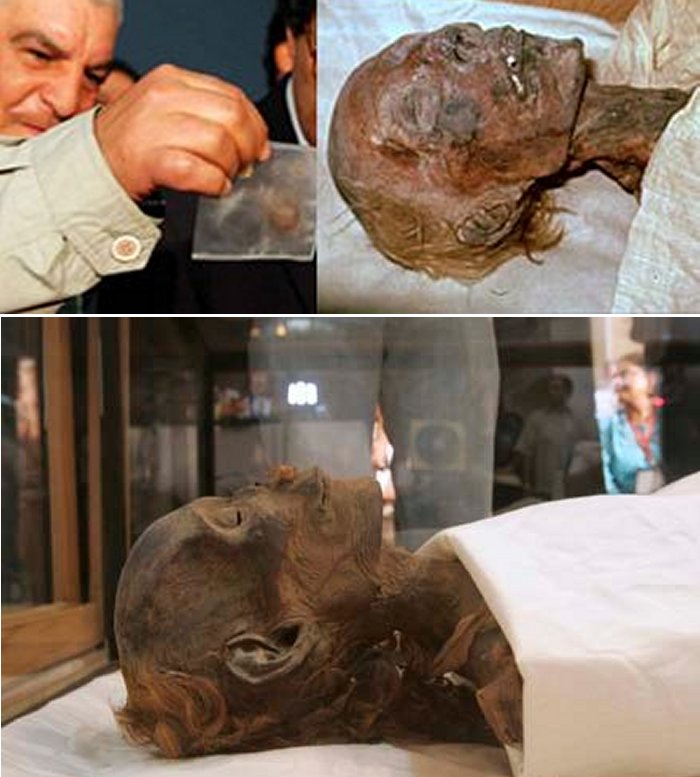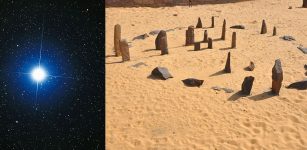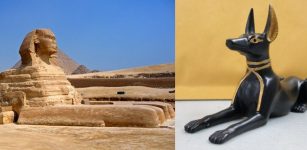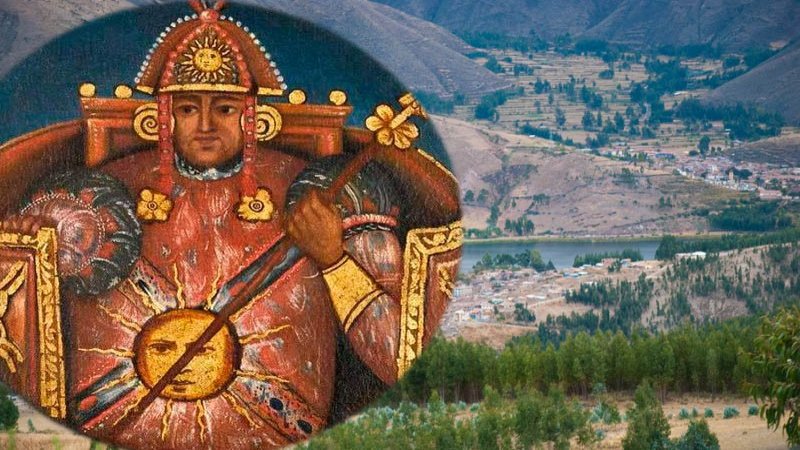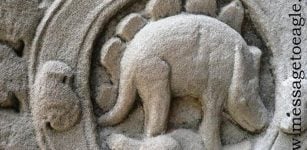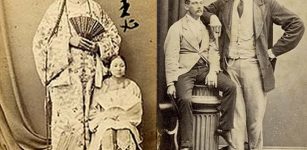The Mystery Of Ancient Egypt’s Red Haired Mummies
Brien Foerster – MessageToEagle.com – “With regard to the ancient Egyptians we have it on the authority of Manetho that they used to burn red-haired men and scatter their ashes with winnowing fans, and it is highly significant that this barbarous sacrifice was offered by the kings at the grave of Osiris.
We may conjecture that the victims represented Osiris himself, who was annually slain, dismembered, and buried in their persons that he might quicken the seed in the earth.” From James Frazer’s “The Golden Bough”:
Clearly a controversial subject, but one worthy of study.
Do we really know, genetically speaking, where the so called dynastic Egyptians came from? Some presume they were exclusively of black African origin, while others speculate that they came from lands to the east, were of a complex racial mix, or in fact had as their source Egypt itself.
Can we tell, based on the facial features of sculptures such as this, presumably of Rameses II, an idea of his ethnic ancestry?
What is perhaps far more curious is the presence of mummies from ancient Egypt that had red, and in some cases even blonde hair.
One of the most famous is the ancestor called “Ginger” which is housed in the British Museum, in the photo below.
Ginger died more than five thousand years ago, yet his golden hair, which gave him his nick name, and even his toe and finger nails were perfectly preserved. He was found in a cemetery at Gebelein, Egypt, and dated to the Late Pre-dynastic period, around 3400 BC, or earlier.
The question unanswered is; did Ginger have natural light colored hair, or was it dyed, and if the latter is the case, why?
Hair color is a fascinating study in itself, and the wide range of shades portrayed in Egyptian art does, to a large extent, reflect the diverse range found in reality.
The most common hair color then, as now, was a very dark brown, almost black color, although natural auburn and even (rather surprisingly) blonde hair are also to be found.
With their great fondness for elaboration, the Egyptians’ skillful use of dyes has produced yet further shades for us to study, analysis showing many to be various forms of henna, which even an aged Rameses II had used regularly to rejuvenate his white hair.
In 1975 the Egyptian government asked French scientists to attempt preservation of the mummy of Rameses.
After the work was complete the mummy was returned in a hermetically sealed casket, and it has remained hidden from public view ever since, concealed in the bowels of the Cairo Museum. The results of the study were published in a lavishly illustrated work, edited by L. Balout, C. Roubet and C. Desroches-Noblecourt, and titled La Momie de Ramsès II: Contribution Scientifique à l’Égyptologie (1985).
Professor P. F. Ceccaldi, with a research team, studied some hairs from the mummy’s scalp. Rameses II was 87 years old when he died, and his hair had turned white.
Ceccaldi determined that the reddish yellow color of the hair was due to a dye with a dilute henna solution. Microscopic examinations showed that the hair roots contained natural red pigments, and that therefore, during his younger days, Rameses II had been a red head. Analysis concluded that these red pigments did not result from the hair somehow fading, or otherwise being altered after death, but did represent Rameses’ natural hair color.
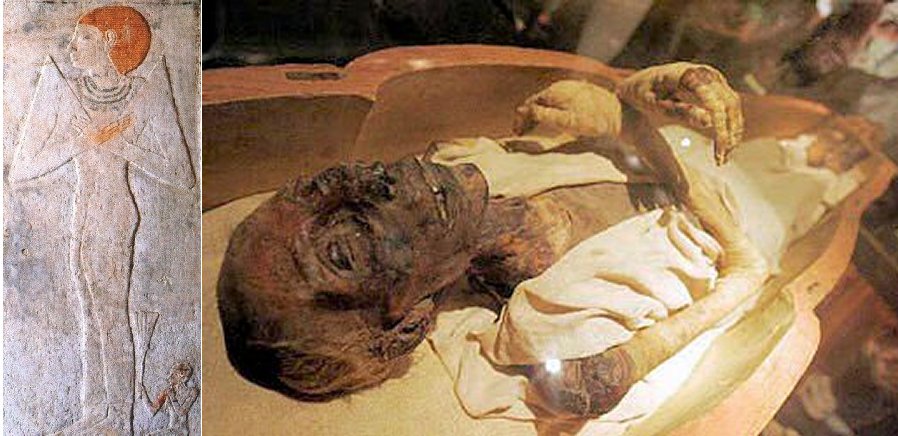
“After having achieved this immense work, an important scientific conclusion remains to be drawn: the anthropological study and the microscopic analysis of hair, carried out by four laboratories: Judiciary Medecine (Professor Ceccaldi), Société L’Oréal, Atomic Energy Commission, and Institut Textile de France showed that Rameses II was a ‘leucoderm’, that is a fair-skinned man, near to the Prehistoric and Antiquity Mediterranean’s, or briefly, of the Berber of Africa.”
Another illustration may be seen from the elaborate tomb of Meresankh III, the granddaughter of King Khufu of the 4th Dynasty.
This beautifully sculptured and painted tomb was built by her mother, Hetepheres II. Hetepheres was first marrid to Prince Kewab, the son of Khufu, and rightful heir to the throne. Hetepheres placed herself in a wall painting showing her hair (or headdress) as red. The poor quality of the reproduced photographs make the colors doubtful, but eyewitness reports tell us it was red.
Written by Brien Foerster
About the author:
Brien Foerster – is the author of 8 books, numerous radio interviews. He resides in Peru with his wife. Visit his blog – Hidden Inca Tours – Exploring Ancient Peru and Beyond where you can follow his fascinating research projects and take part in the most wonderful tours of the ancient world.
Also, don’t forget to watch some of his fascinating videos.
Copyright © Brien Foerster – MessageToEagle.com Contributor




